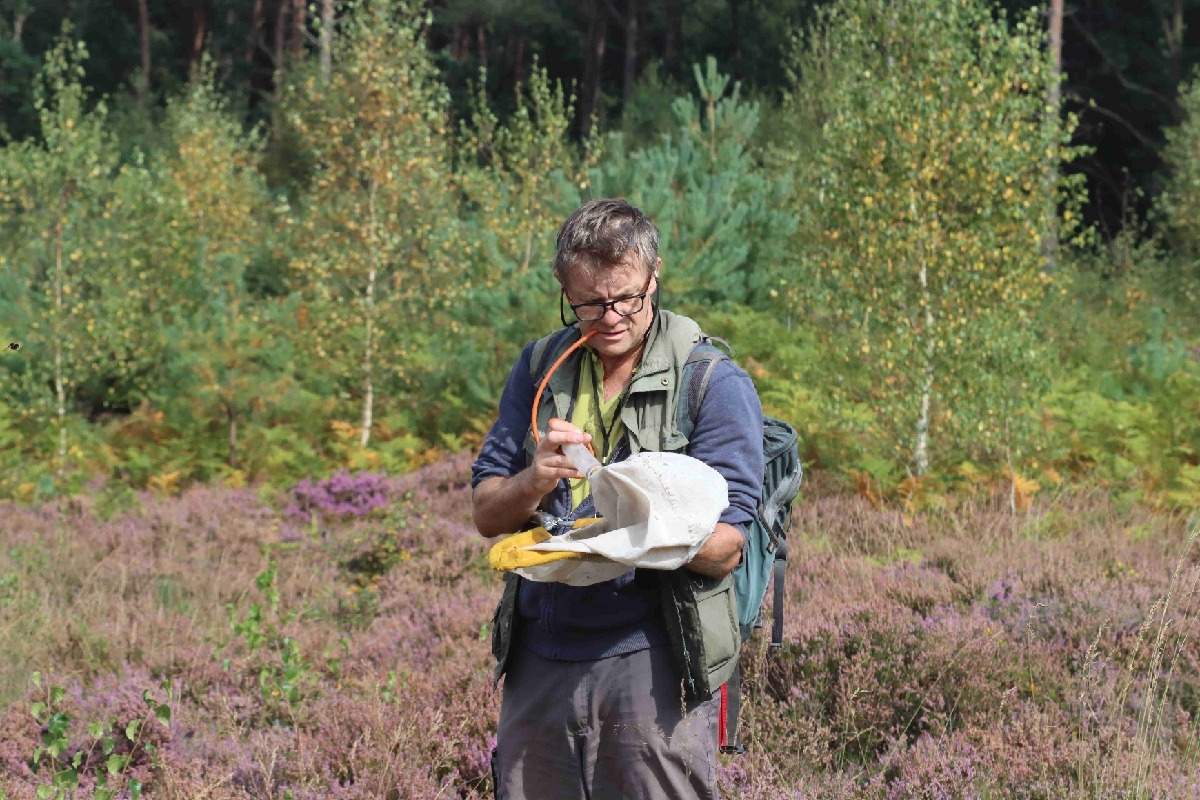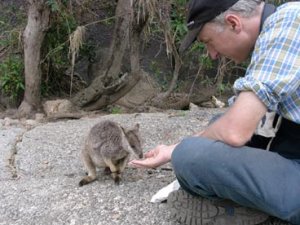Lady Amherst's Pheasant
However, I can't help being a little bemused about the way that Lady Amherst's Pheasant is starting to appear on a few lists based on the escaped individual in Norfolk at present. Lady A used to be an established introduced species in Britain, but was found mostly in Bedfordshire and adjacent counties (and these birds are now all but extinct - perhaps entirely extinct?). Although it bred a couple of times in Norfolk in the early 70s, these birds failed to produce an established population. Since then, single birds are seen very occasionally, but at such a frequency as to show they are clearly individual escapes from collections, not part of an established wild population. Adding the current West Rudham bird to a life or year list is clearly not appropriate, unless you are in the habit of ticking any escaped bird you come across. If so, there are often a few Reeves' Pheasants at Buckenham/Strumpshaw you might want to go and look for too - spectacular birds but clearly not an established population.
Unless any Beds birders can say otherwise, it appears that Lady A is no longer available in Britain. Indeed, it is questionable whether those of us who saw them before they died out should retain them on our lists, as they clearly proved not to be a "self-sustaining population" in the long run.
Sorry!
Andy
Please Log in or Create an account to join the conversation.
- Andy Musgrove
-
 Topic Author
Topic Author
I did add it briefly to my list (presumably what you refer to in your comments) based on the West Rudham bird I saw yesterday, though I have now removed it after looking into it further and later today establishing that it has escaped from the keepers house. Birdguides did not initially put this bird out as an escape, although they subsequently have done. Its provenance has yesterday become clearer, as many suspected an escape.
I agree that it is barely tickable nowadays, having today read that there are just 3 males left from the introduced but established population of birds. Sadly clearly not self sustaining as there are no females left. I had not appreciated the full situation with these birds (or the lack of them).
Still nice to see though. I wonder how many have this ticked on their list when they have seen similar unringed but escaped birds. As you say, should they be on people's lists anyway as an introduced but evidently non-sustainable population?........its a difficult one, but perhaps this explains people's lack of strict ethics regards subsequent sightings of such birds where the species has been introduced but failed to sustain (I can think of no other comparable uk species), well at least in this case to a point where its origin was unproven.
Please Log in or Create an account to join the conversation.
- Posts: 62
There is no similar UK species yet, but it is conceivable that Golden Pheasant and Ruddy Duck, for different reasons, may present the same issue for new listers in the future.
Andy
Please Log in or Create an account to join the conversation.
- Andy Musgrove
-
 Topic Author
Topic Author
Ruddy Duck is not/will not be in the same category as the population clearly was established and self-sustaining until the government decided to get rid of them.
Cheers
Steve
Please Log in or Create an account to join the conversation.
- Posts: 17
"C6 Former naturalized species – species formerly placed in C1 whose naturalized populations are either no longer self-sustaining or are considered extinct, e.g. Lady Amherst's Pheasant Chrysolophus amherstiae."
We'll see...
Andy
Please Log in or Create an account to join the conversation.
- Andy Musgrove
-
 Topic Author
Topic Author
Please Log in or Create an account to join the conversation.
- Posts: 16
Please Log in or Create an account to join the conversation.
- Andy Musgrove
-
 Topic Author
Topic Author
As an aside how many people are counting the White-tailed Eagle releases on the east coast of Scotland, the tagged Great Bustards or countless dodgy wildfowl?
Last winter we had a small Canada Goose (probably Taverner's) along the Wye initially in Herefordshire and later Breconshire, among 250 Canadas. Not inconceivable that it was a genuine transatlantic flyer, and indeed if one arrived in Wales what would be the most likely species it would associate with - Canada Goose. But it will never have a chance of getting through as a accepted vagrant, wrong place and wrong company. I wonder how the Ross's Geese will fair?
Please Log in or Create an account to join the conversation.
- Posts: 1

Please Log in or Create an account to join the conversation.
- Posts: 1
Presumably the Lady A's which were formerly at Pentre Halkyn Cemetery in North Wales fall into the same category as the Brickhill population. Any idea how many years ago the PH birds were last seen ?
Tony
Please Log in or Create an account to join the conversation.
- Posts: 1
Please Log in or Create an account to join the conversation.
- Posts: 16
Andy
Please Log in or Create an account to join the conversation.
- Andy Musgrove
-
 Topic Author
Topic Author
The last time i remember one reported was around 1995 (or maybe 96') when a male was reported together with a Golden Pheasant!!! With that news i decided to give up on them and eventually saw one in Charle Wood, Bedfordshire.
From what i know they were never self sustaining and most birders knew this but opted for the "lazy tick"?
Cheers Ian.
Please Log in or Create an account to join the conversation.
- Posts: 16
Please Log in or Create an account to join the conversation.
- Posts: 1
2006 - six males at three Beds sites
2007 - seven males at three Beds sites but no females seen
2008 - five males at three Beds sites
Cheers
Andy
Please Log in or Create an account to join the conversation.
- Andy Musgrove
-
 Topic Author
Topic Author
I guess, as always, it is up to the individual.
The one I always struggle with is waterfowl, if some are OK, how do you tell the difference between them and the plastics......
Please Log in or Create an account to join the conversation.
- Posts: 1
Resurrecting an old topic here, but I saw a Lady Amherst last week.
I was in ******, in Bedfordshire, on a photo shoot and wandered into the woods for a pee. This very distinctive bird came out for the bushes and legged it away from me.
I didn't know what is was until I did a bit of research, but it was definitely a Lady Amherst
So the breed appears to be still hanging on in there!
Please Log in or Create an account to join the conversation.
- Posts: 3
Hi,
Resurrecting an old topic here, but I saw a Lady Amherst last week.
I was in ******, in Bedfordshire, on a photo shoot and wandered into the woods for a pee. This very distinctive bird came out for the bushes and legged it away from me.
I didn't know what is was until I did a bit of research, but it was definitely a Lady Amherst
So the breed appears to be still hanging on in there!
Ah. Right. So this explains why I've received a couple of phone calls in the last week asking me where the Lady A's were...
I've never been aware of any other Ben Miller/Millars on the UK birding scene before, so to clarify any potential confusion, this Ben Miller has no idea how to see Lady A's in the UK at the moment.
In fact, I've not seen one in Britain since the 20th March 1999 in Lowe's Wood on the Bucks/Bed border, with a number of others including LGRE and Rich Bonser. The last Bucks record I know of was a calling male I heard with Simon Nichols et al on the 1st of May 2005 at Back Wood near Bow Brickhill.
So, sorry, can't help anyone!
Cheers,
Ben Miller,
Bucks Tring, UK
@Bob_Tag
Please Log in or Create an account to join the conversation.
- Posts: 2
Ben Millar wrote:
Hi,
Resurrecting an old topic here, but I saw a Lady Amherst last week.
I was in ******, in Bedfordshire, on a photo shoot and wandered into the woods for a pee. This very distinctive bird came out for the bushes and legged it away from me.
I didn't know what is was until I did a bit of research, but it was definitely a Lady Amherst
So the breed appears to be still hanging on in there!
Ah. Right. So this explains why I've received a couple of phone calls in the last week asking me where the Lady A's were...
I've never been aware of any other Ben Miller/Millars on the UK birding scene before, so to clarify any potential confusion, this Ben Miller has no idea how to see Lady A's in the UK at the moment.
In fact, I've not seen one in Britain since the 20th March 1999 in Lowe's Wood on the Bucks/Bed border, with a number of others including LGRE and Rich Bonser. The last Bucks record I know of was a calling male I heard with Simon Nichols et al on the 1st of May 2005 at Back Wood near Bow Brickhill.
So, sorry, can't help anyone!
Cheers,
Ben Miller,
Bucks Tring, UK
@Bob_Tag
Hi, wasn't aware the location of the birds should be kept under wraps :blush: They are certainly safe, it's not a place the public can go.
I'm not a member of the birding scene, I just joined as I saw the pheasant and this seemed the place to report it.
Funny fact for my namesake Ben Miller - I grew up in Tring!!
Please Log in or Create an account to join the conversation.
- Posts: 3
Funny fact for my namesake Ben Miller - I grew up in Tring!!
What a coincidence.
I don't recall any namesakes! When were you in Tring? Which school did you go to?
Cheers,
Ben
Please Log in or Create an account to join the conversation.
- Posts: 2
Ben Millar wrote:
Funny fact for my namesake Ben Miller - I grew up in Tring!!
What a coincidence.
I don't recall any namesakes! When were you in Tring? Which school did you go to?
Cheers,
Ben
I was in Tring from birth in 1976 up until I left Tring school at 18.
My folks still live there, and we often go back.
Please Log in or Create an account to join the conversation.
- Posts: 3
John
Please Log in or Create an account to join the conversation.
- Posts: 6
Outside of Bedfordshire, a further 5-12 males of captive origin survive in the wild but were NOT part of the original introduction and stock. These are therefore not considered countable.
Please Log in or Create an account to join the conversation.
You know my interest as you can see that I am currently second on the list. This is the first time I have joined the list and I have done it because there appear to be rules regarding what you can or cannot list (i.e BOU rules).
Now using those rules this is what BOU says about Lady A's qualification.
C6 - Former naturalized species – species formerly placed in C1 whose naturalized populations are either no longer self-sustaining or are considered extinct, e.g. Lady Amherst's Pheasant Chrysolophus amherstiae.
Now using that statement how can you list Lady A as part of the BOU rules.
Whilst we are on the subject. How can you also count the Radipole Hooded Merganser which has been rejected by BOU.
You count what you like with your UK400 club but surely within the restraints of the BOU rules you should comply with them and take off both Lady A & Hooded Merganser from your list.
You may think I have a vested interest in you taking off two species so that I can get closer on the list but you have no fear of me catching you up as I work in the week so will always miss loads of species. My only target this year (which will be my last twitching year) is to reach 300 but I will do it totally under the BOU rules, which I hope you will do also.
John
Please Log in or Create an account to join the conversation.
- Posts: 6
There are countless lists on BUBO BOU admitting the Radipole Hooded Merganser to their lists and hence why I added it. However, as you will see from my UK400 Club list also on BUBO, that I don't count it and it is not (currently) countable. However, I personally feel that this bird is a natural vagrant rather than an escapee and NOBODY knows its merits other than itself. It turned up the very morning after a bird in exactly the same plumage was last seen on The Azores - relocating bird perhaps. Portland has proven its ability to receive far-flung vagrants from elsewhere in Europe next day (eg last year's Stejgener's Stonechat)
And you may be well out with your assumptions. Spending nearly 6 months of the year tour leading and guiding around the globe, YOU are in a better position than me to chase UK rares, even if you can only travel at weekends - nobody has more commitments or is busier than me. Remember I have a wife and 4 cats to fulfil, numerous businesses to run and countless birders to answer and help
Please Log in or Create an account to join the conversation.
Whether you think it is right or wrong has no bearing on this isue as we still should abide by the rules as they stand and then complain with a good case why the other two species should be asccepted onto the lists.
If after that they change their stance on these birds then count them but if not you shouldn't consider them on the BOU list.
John
Please Log in or Create an account to join the conversation.
- Posts: 6
To be clear I haven't seen Lady A's in Britain, nor am I likely to now, so I don't have a vested interest in their tickability, I just don't understand why you don't think that you can count a C6 species.
Regards,
James
Please Log in or Create an account to join the conversation.
- Posts: 9
Thanks for the clarification regarding Lady A's. I was always under the impression (wrongly by the look of it) that once a species was declared non sustainable that it was no longer tickable. It looks like I now stand corrected.
Regarding the Hooded Merganser at Radipole. How is that bird tickable when it has not been accepted by the BOU.
John
Please Log in or Create an account to join the conversation.
- Posts: 6
I can understand why that would seem to be the case. You could quite reasonably claim that as Lady A's Pheasants are now going extinct, that the population was never self-sustaining. However, as the decline was at least partly down to human interference, I think the general line is that the population was self-sustainable for a reasonable period, which justifies their position on Category C. With regards to ticking them, the key part on the BOU website is that the birds that are left are derived from a self-sustaining population, so they are OK. The only other option would be for BOURC to decide that the population was never self-sustaining, at which point it would have to be removed from Category C and moved to Category E. To put it another way, if a 15th generation born-in-the-wild pheasant was OK to tick twenty years ago, why wouldn't a 25th generation born-in-the-wild pheasant be tickable now? (obviously I have made up the number of generations, but I think it illustrates the point).
I agree with you that if you are keeping a strict BOU list (i.e. using BOU taxonomy and decisions) then you shouldn't count the Radipole Merganser as it was rejected by BBRC.
Many people keep a not-so-strict BOU list, using the taxonomy but counting birds that they feel were identified correctly/were wild, but were rejected. The problem here is that if some people put on a strict list and some don't then it makes comparison less valid.
All the best,
James
John Jennings wrote:
Hi James
Thanks for the clarification regarding Lady A's. I was always under the impression (wrongly by the look of it) that once a species was declared non sustainable that it was no longer tickable. It looks like I now stand corrected.
Regarding the Hooded Merganser at Radipole. How is that bird tickable when it has not been accepted by the BOU.
John
Please Log in or Create an account to join the conversation.
- Posts: 9
I can see why there is confusion regarding the Lady A's but not the Merganser.
I spoke to Lee about the Merganser at the Dusky Thrush site but he just seemed to pass it over.
As far as I am concerned this year list is using BOU rules and while I now accept the lady A argument I can't accept the Merganser one and this bird (although like quite a few other birders I suspect that this is an acceptable one) should not be ticked by anyone, including those birders whose only excuse is, "well Lee has ticked it so I will".
It doesn't say much for their own minds when they can't make a judgement based on the rules we appear to be working to.
I have seen the Merganser but I am not ticking it, not on my life list or my year list, until it has been accepted by the BOU (which I feel will never happen).
Regards
John
Please Log in or Create an account to join the conversation.
- Posts: 6




